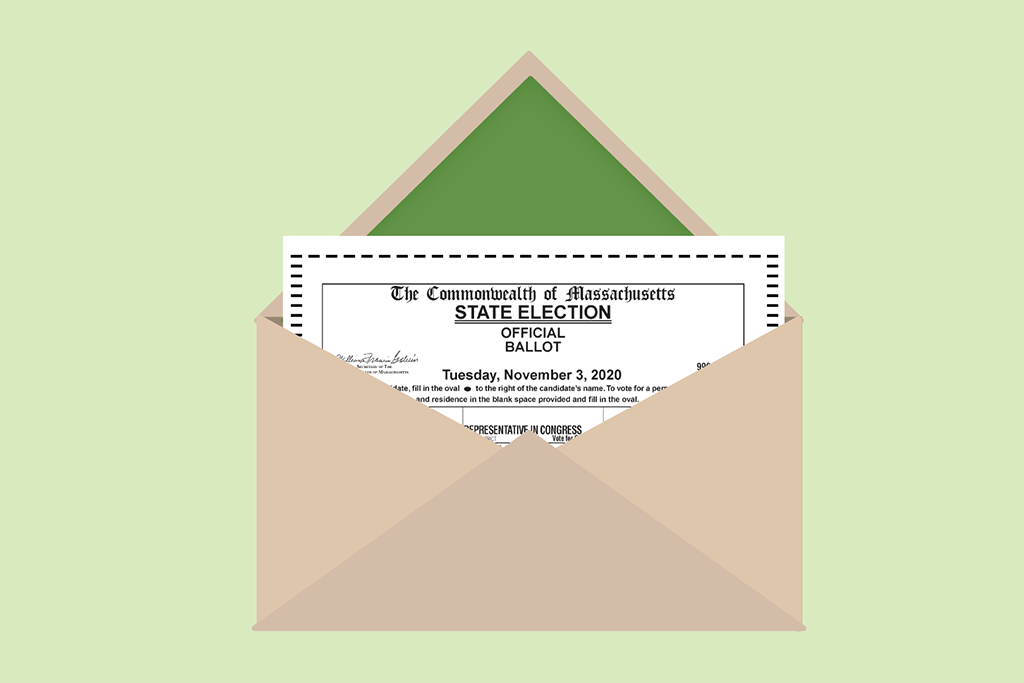Poll watching, mail-in voting, and election security in general were onstage at this week's presidential debate, with President Donald Trump again making false claims about fraud. GBH News reporter Edgar B. Herwick III has been taking a deep dive when it comes to mail-in voting in Massachusetts. He spoke with GBH All Things Considered host Arun Rath. This transcript has been edited for clarity.
Arun Rath: So you've been deep in this, in terms of the mail-in voting question. You've received a lot of questions from listeners about mail-in voting. What have been the themes that have come up?
More Local News
Edgar B. Herwick III: The big one is kind of a basic one. I've heard from a lot of people who continue to ask: If I apply for a mail-in ballot, can I change my mind and instead vote in person? And the answer there is yes, you can. So if you think you might want to vote by mail and you haven't already, apply for a ballot. You can change your mind, not send it back, and still go vote in person on Election Day.
The other big question lately from a number of people are from folks who voted by mail in the September primary. They want to know: Are they just going to get a ballot now for November because they've already signed up for mail-in balloting? The answer there is that it depends. In the initial mailing that was sent out for applications for mail-in balloting here in Massachusetts, there were two boxes to check. One was for the primary and one was for the general election. If you checked both, your general election ballot is going to be coming. If you haven't, then you won't get a general election ballot, but you can still apply for one now, either in paper — they sent another mailing out a few weeks ago — or online. There's a portal now on the Massachusetts secretary of state's website. You still have time to do so, so you can go ahead and do that.
Rath: You took a look at states where mail-in voting has been happening for a long time. Any lessons there?
Herwick: Washington state is a place where they've been doing it since 2011, almost exclusively. I had a number of conversations with a woman named Lori Augino there, who is the director of elections in Washington state. She notes that you can still vote in person, but it's rare. “It's kind of a tug of war almost between making it as accessible as possible while also building in all of the appropriate security precautions,” said Augino.
So one important thing to note is there are some differences. Washington's election system is way more centralized than ours. It's done at the county level, there are 39 counties there. Ours is run at the municipal level, and there are 351 municipalities in Massachusetts. Then in terms of actually returning the ballot, you can do it by mail in Washington, of course, and then they have election centers, where you can ask questions, drop your ballot off, and they have ballot drop-off boxes all over the state.
Here, it's a little different. There is the mail, of course. You can mail it back. But because we're run at the municipal level, the whole drop box thing sort of differs from place to place. Some municipalities have put a lot of drop boxes up, some fewer.
Now, it's important to note that we know from a number of studies that voter fraud is rare. A much-cited study on this, kind of called the definitive study, from the NYU School of Law’s Brennan Center for Justice, puts the fraud rate between .0003 and .0025 percent. Basically, they've concluded it's more likely you will be struck by lightning than somebody will impersonate you at the polls.
Rath: We just got new details from the head of elections in Massachusetts, Secretary of State Bill Galvin's office, about how mail-in voting went here during the primary. What are the takeaways there?
Herwick: Well, there's a few. People used it. People voted by mail in all but three of Massachusetts’ 351 cities and towns. 814,000 mail-in ballots were cast in all, about 47% of the total vote.
The other big takeaway is that 98% plus of the mail-in ballots that were returned were deemed valid and counted. That means almost 18,000 were rejected. The most common reason for rejection, more than 8,000 of them, was because they arrived too late, after the deadline. Now there's another 3,000 plus that were invalidated because they were missing the envelope or the envelope was unsigned. So the big takeaway here is: Sign your ballot envelope and mail your vote back early if you want to vote by mail. And remember, failing everything else, if you come to Election Day and you're worried that your vote has not been counted, you can still go and vote in person. They have fail-safes that will keep your vote from being counted twice.











